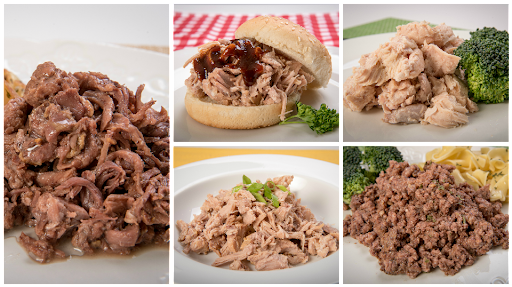Canned meat boosts the protein content of your meals. Even better, because it’s already cooked, you can eat it right out of the can or reheat it in minutes. Spam was once synonymous with canned meat. Thankfully, those days are long gone, and you can now get canned meat and fish in a broad variety of flavors in both the grocery store and online. We’ve compiled a list of the best-canned meats and what to look for when stocking up.
What is Canned Meat?
You surely saw canned meat on supermarket shelves, and you bought canned tuna for salads more than once. But canned tuna and ham aren’t the only things it has to offer.
Heat is used in the canning process to kill germs that could ruin the product. As a result, it can be kept for a long period. Canned meat is loaded with a lot of protein.
There is a wide selection of canned meats on the market, with numerous alternatives available online and in stores.
We advocate stocking up on canned mixed meat in case of need and using it to make a variety of delectable recipes in regular life.
How Are Canned Foods Made?
Fruits and vegetables are frequently canned within hours of being picked. Some techniques may differ depending on the food item, but after a fruit or vegetable is gathered and transferred to a canning facility, it goes through three basic steps.
- Processing: Before canning, fruits and vegetables are washed and frequently peeled, sliced, chopped, or pitted. Various fruits and vegetables can be blanched and rehydrated before time like dried beans.
- Sealing: Once the food has been processed, it is placed in cans and the lid is sealed.
- Heating: After the can is sealed, it is swiftly heated to a precise temperature for a set period of time to kill hazardous germs and prevent spoiling. It is swiftly cooled after it has been heated.
Canned meat and fish – Significance
Canned beef and fish are excellent, low-cost protein sources. Proteins canned in water or brine, rather than oil or sauces, have lower calorie and fat content. For instance, 3.5 ounces (100 grams) of tuna canned in oil contains 200 calories and 8 grams of fat, whereas the same amount of tuna canned in water has only 90 calories and 1 gram of fat. Cans of salmon, tuna, sardines, and chicken are all excellent sources of protein.
Nutritive value:
Chicken in a can has a low-fat content but is abundant in protein, calcium, and vitamin D. Salmon, tuna, and sardines are high in protein and omega-3 fatty acids, which may lower the risk of heart disease.
Uses:
Stovetop patties, dips, pasta, salads, soups, and quesadillas are all made easier using canned meats and fish.
Last But Not Least
It is not necessary to spend a lot of money when choosing nutritious food to eat. Many types of canned meat are low-cost, fast to prepare, and high in nutrients that are good for your health. They also last a long time and can be utilized in a wide range of dishes. Always check the nutrition label to see if canned food is suitable for your lifestyle.


